Title search results
Showing 1 - 20 of 22000 items
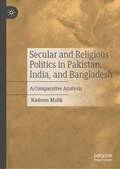
This book thoroughly explores the complex relationship between secularism and religious politics in South Asia. It examines the historical and…
contemporary factors that have influenced the political landscapes of Pakistan, India, and Bangladesh, focusing on how colonial legacies, nation-building processes, and religious ideologies have shaped governance and social structures. Through comparative analysis, the book delves into the rise of Hindutva in India, the struggle between secularism and Islamism in Bangladesh, and the role of Islam in Pakistan's politics. By integrating diverse theoretical perspectives and historical contexts, this book offers a comprehensive understanding of the evolving nature of secularism and religious politics in these three nations. It also provides insights into the broader implications for democracy, pluralism, and religious freedom in South Asia. This book is essential reading for scholars, policymakers, and anyone interested in the intersection of religion and politics in one of the world's most complex and dynamic regions.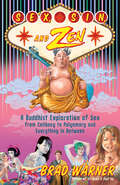
With his one-of-a kind blend of autobiography, pop culture, and plainspoken Buddhism, Brad Warner explores an A-to-Z of sexual topics…
— from masturbation to dating, gender identity to pornography. In addition to approaching sexuality from a Buddhist perspective, he looks at Buddhism — emptiness, compassion, karma — from a sexual vantage. Throughout, he stares down the tough questions: Can prostitution be a right livelihood? Can a good spiritual master also be really, really bad? And ultimately, what's love got to do with any of it? While no puritan when it comes to non-vanilla sexuality, Warner offers a conscious approach to sexual ethics and intimacy — real-world wisdom for our times.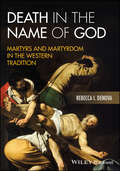
Death in the Name of God: Martyrs and Martyrdom in the Western Tradition
By Rebecca I. Denova. 2025
Explores the evolution of martyrdom across Judaism, Christianity, and Islam Martyrdom has long been a defining concept in religious traditions,…
shaping the identities of faith communities and influencing theological thought across centuries. Death in the Name of God: Martyrs and Martyrdom traces the historical development of this powerful idea within Judaism, Christianity, and Islam, examining how cultural, social, and political contexts have influenced evolving interpretations of martyrdom. Through a multidisciplinary lens, noted scholar Rebecca I. Denova provides a comprehensive analysis of how each tradition adapted and redefined martyrdom in response to changing historical circumstances. By offering historical depth and critical examination, the author helps readers understand how martyrdom has been utilized to define faith, legitimacy, and religious authority in different eras. An accessible yet rigorous study of the roots and transformations of martyrdom, Death in the Name of God features detailed historical context, primary source discussions, and thematic analyses. The book's three-tiered methodological framework—descriptive, comparative, and critical—guides readers through the role of martyrdom in shaping religious belief systems, including its origins in ancient traditions, its role in theological and political developments, and its continued significance in modern religious and social discourse. An essential resource for understanding the enduring impact of martyrdom in Western religious thought, Death in the Name of God: Provides a multidisciplinary analysis of martyrdom through history, incorporating anthropology, sociology, philosophy, and religious studies Explores how martyrdom developed in response to shifting historical and cultural contexts Features sections that offer deeper insight into key topics such as the evolution of Satan and distinctions in martyrdom between Sunni and Shi′a Islam Examines how martyrdom transitioned from an act of deliberate sacrifice to a modern concept of victimhood and social struggle Includes timelines, figures, and archaeological findings to provide visual and historical context Offering a non-theological, academic perspective that fosters objective discussion on a historically and politically charged topic, Death in the Name of God: Martyrs and Martyrdom is perfect for courses in Religious Studies, History, Theology, and Middle Eastern Studies. It is particularly well-suited for degree programs in the liberal arts and social sciences, offering foundational knowledge for courses on the history of Judaism, Christianity, and Islam, as well as broader discussions on religious violence and martyrdom in contemporary society.
Religion and the American West: Belief, Violence, and Resilience from 1800 to Today
By Jessica Lauren Nelson. 2023
Religion and the American West offers a lavishly illustrated and comprehensive overview of the ways religion has shaped the idea…
of the American West and how the region has influenced broader religious and racial categories. Starting when the concept of the &“American West&” emerged in the early 1800s and continuing the analysis through modern times, Religion and the American West explores the interplay between a wide range of American belief systems, from established world religions to new spiritual innovations.A stunning selection of material and print culture illustrates the varied range of religious expressions across the history of the American West. Taken as a whole, the contributors challenge longstanding definitions of the American West and provide a new narrative that recenters our attention on the lived experiences of diverse peoples and communities. It also serves as the companion publication for the exhibition &“Acts of Faith,&” opening fall 2023 at the New York Historical Society. Religion and the American West is a story of vibrant innovation and tragic conflict, showcasing how historical actors and modern-day readers wrestle with the meaning of religious belief in the American West.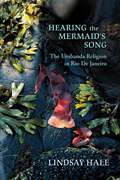
Hearing the Mermaid's Song: The Umbanda Religion in Rio de Janeiro
By Lindsay Hale. 2009
The Umbanda religion summons the spirits of old slaves and Brazilian Indians to speak through the mouths of mediums in…
trance. Its practitioners worship African gods, often calling them by the names of Catholic saints; simultaneously embrace the concepts of karma, reincarnation, and Christian charity; and believe in the capacities of both modern science and ancient magic. A relatively new religion dating to the beginning of the twentieth century, Umbanda has its origins in Rio de Janeiro and its surrounding urban areas where Afro-Brazilians, many ex-slaves or the descendants of slaves, practiced versions of the religion handed down to them by their ancestors. Umbanda's popularity has grown tremendously over the past century, attracting not only those who seek the assistance of spirits in solving problems in their lives, but those in pursuit of a path to a rich spiritual life and a fellowship of faith and service.Over the course of nearly a decade, Lindsay Hale spent countless hours attending rituals and festivals and interviewing participants of Umbanda, immersing himself in this fascinating religious world. In describing its many aspects and exploring its unique place within the lives of a wide variety of practitioners, Hale places Umbanda spiritual beliefs and practices within the broader context of Brazilian history and culture.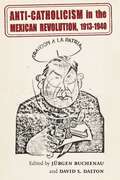
Anti-Catholicism in the Mexican Revolution, 1913-1940 (Diálogos Series)
By Jürgen Buchenau and David S. Dalton. 2024
Anti-Catholicism in the Mexican Revolution, 1913–1940 examines anti-Catholic leaders and movements during the Mexican Revolution, an era that resulted in a…
constitution denying the Church political rights. Anti-Catholic Mexicans recognized a common enemy in a politically active Church in a predominantly Catholic nation. Many books have elucidated the popular roots and diversity of Roman Catholicism in Mexico, but the perspective of the Church’s adversaries has remained much less understood.This volume provides a fresh perspective on the violent conflict between Catholics and the revolutionary state, which was led by anti-Catholics such as Plutarco Elías Calles, who were bent on eradicating the influence of the Catholic Church in politics, in the nation’s educational system, and in the national consciousness. The zeal with which anti-Catholics pursued their goals—and the equal vigor with which Catholics defended their Church and their faith—explains why the conflict between Catholics and anti-Catholics turned violent, culminating in the devastating Cristero Rebellion (1926–1929).Collecting essays by a team of senior scholars in history and cultural studies, the book includes chapters on anti-Catholic leaders and intellectuals, movements promoting scientific education and anti-alcohol campaigns, muralism, feminist activists, and Mormons and Mennonites. A concluding afterword by Matthew Butler, a global authority on twentieth-century Mexican religion, provides a larger perspective on the themes of the book.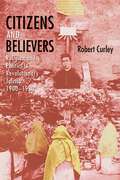
Citizens and Believers: Religion and Politics in Revolutionary Jalisco, 1900–1930
By Robert Curley. 2018
This book shows the centrality of religion to the making of the 1910 Mexican revolution. It goes beyond conventional studies…
of church-state conflict to focus on Catholics as political subjects whose religious identity became a fundamental aspect of citizenship during the first three decades of the twentieth century.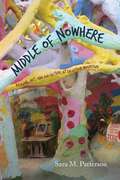
Middle of Nowhere: Religion, Art, and Pop Culture at Salvation Mountain
By Sara M. Patterson. 2016
Pilgrims travel thousands of miles to visit Salvation Mountain, a unique religious structure in the Southern California desert. Built by…
Leonard Knight (1931–2014), variously described as a modern-day prophet and an outsider artist, Salvation Mountain offers a message of divine love for humanity. In Middle of Nowhere Sara M. Patterson argues that Knight was a spiritual descendant of the early Christian desert ascetics who escaped to the desert in order to experience God more fully. Like his early Christian predecessors, Knight received visitors from all over the world who were seeking his wisdom. In Knight&’s wisdom they found a critique of capitalism, a challenge to religious divisions, and a celebration of the common person. Recounting the pilgrims&’ stories, Middle of Nowhere examines how Knight and the pilgrims constructed a sacred space, one that is now crumbling since the death of its creator.
Yoruba Traditions and African American Religious Nationalism (Religions of the Americas Series)
By Tracey E. Hucks. 2012
Exploring the Yoruba tradition in the United States, Hucks begins with the story of Nana Oseijeman Adefunmi&’s personal search for…
identity and meaning as a young man in Detroit in the 1930s and 1940s. She traces his development as an artist, religious leader, and founder of several African-influenced religio-cultural projects in Harlem and later in the South. Adefunmi was part of a generation of young migrants attracted to the bohemian lifestyle of New York City and the black nationalist fervor of Harlem. Cofounding Shango Temple in 1959, Yoruba Temple in 1960, and Oyotunji African Village in 1970, Adefunmi and other African Americans in that period renamed themselves &“Yorubas&” and engaged in the task of transforming Cuban Santer'a into a new religious expression that satisfied their racial and nationalist leanings and eventually helped to place African Americans on a global religious schema alongside other Yoruba practitioners in Africa and the diaspora.Alongside the story of Adefunmi, Hucks weaves historical and sociological analyses of the relationship between black cultural nationalism and reinterpretations of the meaning of Africa from within the African American community.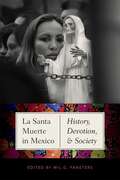
La Santa Muerte in Mexico: History, Devotion, and Society
By Wil G. Pansters. 2019
For over a decade the cult of La Santa Muerte has grown rapidly in Mexico and the United States. Thousands…
of people—ranging from drug runners and mothers to cabdrivers, soldiers, police, and prison inmates—invoke the protection of La Santa Muerte. Devotees seek her protection through practicing popular vows, attending public rosaries and masses at street altars, and constructing and maintaining home altars.This book examines La Santa Muerte&’s role in people&’s daily lives and explores how popular religious practices of worship and devotion developed around a figure often associated with illicit activities. She represents life with the possibility of respite but without ultimate redemption, and she speaks to the complexities of lives lived at the fringes of violence, insecurity, impunity, and economic hardship. The essays collected here move beyond the visually arresting sight of La Santa Muerte as a tattoo or figurine, suggesting that she represents a major movement in Mexico.
The Clear Light: Spiritual Reflections and Meditations (An Eckhart Tolle Edition)
By Steve Taylor. 2025
As Eckhart Tolle has written, poetry &“has been recognized since ancient times as a highly appropriate medium for the expression…
and transmission of spiritual truth.&” The Clear Light is Steve Taylor&’s latest contribution to this poetic tradition, offering short and powerful reflections as a guide to spiritual awakening and as experiential glimpses of the state of enlightenment itself. Taylor ranges widely, through subjects including &“Making the Human Race Whole,&” &“Freedom from the Past,&” and &“The Reality of Connection,&” always in clear and simple language. Best of all, he reminds us of the choices we always have when life feels chaotic and overwhelming: empathy, acceptance, and love. Soothing but also challenging, Taylor&’s words continually affirm the profound bedrock of peace and even joy in the present that is always available. The book&’s eponymous reflection says it best: There is nothing that can&’t be undone — no past injury that can&’t be healed no past mistake that can&’t be corrected — in the clear light of the present. Reading this book is a transformational spiritual experience in itself.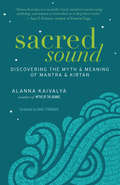
Sacred Sound: Discovering the Myth and Meaning of Mantra and Kirtan
By Alanna Kaivalya. 2014
The mantra and kirtan (call-and-response devotional chants) of yoga practice sometimes get short shrift in the West because they aren’t…
well understood. These chants are an integral part of most every Eastern spiritual practice because they are designed to provide access into the psyche while their underlying mythology helps us understand how our psychology affects daily life. Sacred Sound shares the myths behind the mantras, illuminating their meaning and putting their power and practicality within reach of every practitioner. Each mantra and kirtan includes the Sanskrit, the transliteration, and the translation. Clear retellings of the pertinent myths highlight modern-day applications so that readers discover their own personal connection to the practice. Alanna Kaivalya has refined her teaching over a decade with tens of thousands of diverse audience members. Her unique and popular approach to human connection and self-knowledge turns a time-tested tradition into a versatile and potent tool.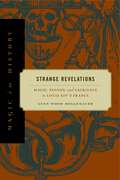
Strange Revelations: Magic, Poison, and Sacrilege in Louis XIV's France (Magic in History)
By Lynn Wood Mollenauer. 2006
The Affair of the Poisons was the greatest court scandal of the seventeenth century. From 1679 to 1682 the French…
crown investigated more than 400 people—including Louis XIV’s official mistress and members of the highest-ranking circles at court—for sensational crimes. In Strange Revelations, Lynn Mollenauer brings this bizarre story to life, exposing a criminal magical underworld thriving in the heart of the Sun King’s capital. The macabre details of the Affair of the Poisons read like a gothic novel. In the fall of 1678, Nicolas de la Reynie, head of the Paris police, uncovered a plot to poison Louis XIV. La Reynie’s subsequent investigation unveiled a loosely knit community of sorceresses, magicians, and renegade priests who offered for sale an array of services and products ranging from abortions to love magic to poisons known as “inheritance powders.” It was the inheritance powders (usually made from powdered toads steeped in arsenic) that lent the Affair of the Poisons its name. The purchasers of the powders gave the affair its notoriety, for the scandal extended into the most exalted ranks of the French court. Mollenauer adroitly uses the Affair of the Poisons to uncover the hidden forms of power that men and women of all social classes invoked to achieve their goals. While the exercise of state power during the ancien régime was quintessentially visible—ritually displayed through public ceremonies—the affair exposes the simultaneous presence of other imagined and real sources of power available to the Sun King’s subjects: magic, poison, and the manipulation of sexual passions. Highly entertaining yet deeply researched, Strange Revelations will appeal to anyone interested in the history of court society, gender, magic, or crime in early modern Europe.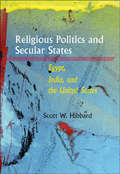
Religious Politics and Secular States: Egypt, India, and the United States
By Scott W. Hibbard. 2011
2011 Winner of the Charles H. Levine Memorial Book Prize of the International Political Science AssociationThis comparative analysis probes why…
conservative renderings of religious tradition in the United States, India, and Egypt remain so influential in the politics of these three ostensibly secular societies. The United States, Egypt, and India were quintessential models of secular modernity in the 1950s and 1960s. By the 1980s and 1990s, conservative Islamists challenged the Egyptian government, India witnessed a surge in Hindu nationalism, and the Christian right in the United States rose to dominate the Republican Party and large swaths of the public discourse. Using a nuanced theoretical framework that emphasizes the interaction of religion and politics, Scott W. Hibbard argues that three interrelated issues led to this state of affairs. First, as an essential part of the construction of collective identities, religion serves as a basis for social solidarity and political mobilization. Second, in providing a moral framework, religion's traditional elements make it relevant to modern political life. Third, and most significant, in manipulating religion for political gain, political elites undermined the secular consensus of the modern state that had been in place since the end of World War II. Together, these factors sparked a new era of right-wing religious populism in the three nations.Although much has been written about the resurgence of religious politics, scholars have paid less attention to the role of state actors in promoting new visions of religion and society. Religious Politics and Secular States fills this gap by situating this trend within long-standing debates over the proper role of religion in public life.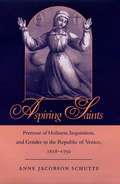
Aspiring Saints: Pretense of Holiness, Inquisition, and Gender in the Republic of Venice, 1618-1750
By Anne Jacobson Schutte. 2001
Winner of an Honorable Mention in the Professional/Scholarly Publishing Awards given by the Association of American PublishersBetween 1618 and 1750,…
sixteen people—nine women and seven men—were brought to the attention of the ecclesiastical authorities in Venice because they were reporting visions, revelations, and special privileges from heaven. All were investigated, and most were put on trial by the Holy Office of the Inquisition on a charge of heresy under various rubrics that might be translated as "pretense of holiness."Anne Jacobson Schutte looks closely at the institutional, cultural, and religious contexts that gave rise to the phenomenon of visionaries in Venice. To explain the worldview of the prosecutors as well as the prosecuted, Schutte examines inquisitorial trial dossiers, theological manuals, spiritual treatises, and medical works that shaped early modern Italians' understanding of the differences between orthodox Catholic belief and heresy. In particular, she demonstrates that socially constructed assumptions about males and females affected how the Inquisition treated the accused parties. The women charged with heresy were non-elites who generally claimed to experience ecstatic visions and receive messages; the men were usually clergy who responded to these women without claiming any supernatural experience themselves. Because they "should have known better," the men were judged more harshly by authorities.Placing the events in a context larger than just the inquisitorial process, Aspiring Saints sheds new light on the history of religion, the dynamics of gender relations, and the ambiguous boundary between sincerity and pretense in early modern Italy.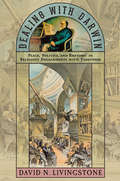
How was Darwin’s work discussed and debated among the same religious denomination in different locations?Using place, politics, and rhetoric as…
analytical tools, historical geographer David N. Livingstone investigates how religious communities sharing a Scots Presbyterian heritage engaged with Darwin and Darwinism at the turn of the twentieth century. His findings, presented as the prestigious Gifford Lectures, transform our understandings of the relationship between science and religion.The particulars of place—whether in Edinburgh, Belfast, Toronto, Princeton, or Columbia, South Carolina—shaped the response to Darwin’s theories. Were they tolerated, repudiated, or welcomed? Livingstone shows how Darwin was read in different ways, with meaning distilled from Darwin's texts depending on readers' own histories—their literary genealogies and cultural preoccupations. That the theory of evolution fared differently in different places, Livingstone writes, is "exactly what Darwin might have predicted. As the theory diffused, it diverged." Dealing with Darwin shows the profound extent to which theological debates about evolution were rooted in such matters as anxieties over control of education, the politics of race relations, the nature of local scientific traditions, and challenges to traditional cultural identity. In some settings, conciliation with the new theory, even endorsement, was possible—demonstrating that attending to the specific nature of individual communities subverts an inclination to assume a single relationship between science and religion in general, evolution and Christianity in particular. Livingstone concludes with contemporary examples to remind us that what scientists can say and what others can hear in different venues differ today just as much as they did in the past.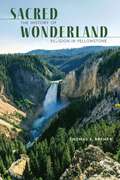
Sacred Wonderland: The History of Religion in Yellowstone (America’s Public Lands)
By Thomas S. Bremer. 2025
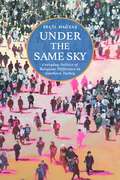
Under the Same Sky: Everyday Politics of Religious Difference in Southern Turkey
By Seçil Daǧtaș. 2025
An ethnographic study of the everyday lives of religious minorities near Turkey’s border with SyriaHow do people coexist in a…
world shaped by longstanding differences, political instability, and recurrent displacement? In Under the Same Sky, Seçil Daǧtaș addresses this question by exploring the everyday politics of religious difference among minority communities in Turkey’s southern borderlands.In a region often portrayed through the lens of conflict and division, this ethnography brings to life the subtle, often overlooked negotiations occurring in social spaces such as bustling city bazaars, shared worship sites, interfaith unions, home gatherings, and a multireligious choir. Set against the backdrop of major political upheavals in Turkey and Syria before the 2023 earthquakes devastated the region, the book demonstrates how Arab ‘Alawis, Christians, and Jews, alongside their Sunni Muslim neighbors, use familiar social idioms—kinship, hospitality, love, and companionship—to reproduce religious differences.Daǧtaș argues that religious difference is more than an identity marker for these communities, as it is often treated in studies focused on statecraft or political movements. It is a dynamic aspect of social relations which is constantly redefined by race, class, citizenship, and gender, and unsettled by overlapping practices and multireligious belonging. Under the Same Sky focuses on religious difference as lived and reworked in daily encounters—within the larger context of a majoritarian Turkish Sunni state—inviting readers to reconsider secularism, religious plurality, and the nature of political life.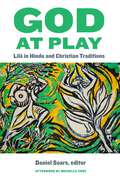
The first comparative treatment of the topic of līlā in Hindu and Christian traditions, this volume explores what it means…
to consider divine and human action under the categories of play, wit, drama, grace, and compassionGod at Play presents a theological exploration of the multifaceted motif of līlā across diverse Hindu and Christian landscapes and its wide-ranging connections to divine and human creativity. Given its ubiquity in Hindu theologies and life-forms, līlā offers a rich comparative framework for exploring certain ways of understanding divine and human action as expressed in Hindu and Christian sacred texts, philosophical theology, and ritual practices.Though līlā is often interpreted simply as “play,” the essays in this volume reflect a far richer semantic and conceptual field, ranging from spontaneity and gratuitousness, through joy and humor, to mercy and compassion. By focusing on the different contexts in which līlā is found in Hindu traditions and resisting any uniform translation of the term, the contributors to this volume avoid the risk of using predominantly western or Christian categories to understand the Hindu other. The volume thus explores how līlā functions in a variety of distinctive philosophical, theological, and devotional ways across Hindu traditions, and listens for echoes in Christian understandings of the gratuitousness of the created order in relation to God.God at Play is a genuine experiment in deep learning across traditions. Each chapter reflects on what is learned by taking līlā as the category of comparison and invites the reader to think about what these conversations add, confirm, or change in relation to earlier twentieth-century scholarship on play—not least, in terms of what difference it might make to understand human life as an imitation and a participation in the divine life of a playful deity.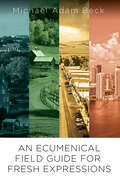
An Ecumenical Field Guide For Fresh Expressions
By Michael Adam Beck. 2024
Learn the essentials of fresh expressions for your church.An Ecumenical Field Guide for Fresh Expressions is a practical manual for…
understanding and implementing Fresh Expressions for a church in any denominational setting.The Fresh Expressions movement is a new way of thinking about the local church and a new way of doing church as a congregation. It refers to new (fresh) iterations or types (expressions) of ministry, usually outside the confines of the church building. These iterations or types of ministries are formed intentionally but organically out in the community, where people are. They are based on shared activities or interests, where people are gathering already, and where the people are open to or interested in learning about Jesus. Christian people share their own stories of how Jesus is part of their lives. Often, these gatherings become regular and increasingly begin to adopt the practices of a church community, like worship, service, study, and giving. Thus, they become fresh expressions of the church from which they sprang.